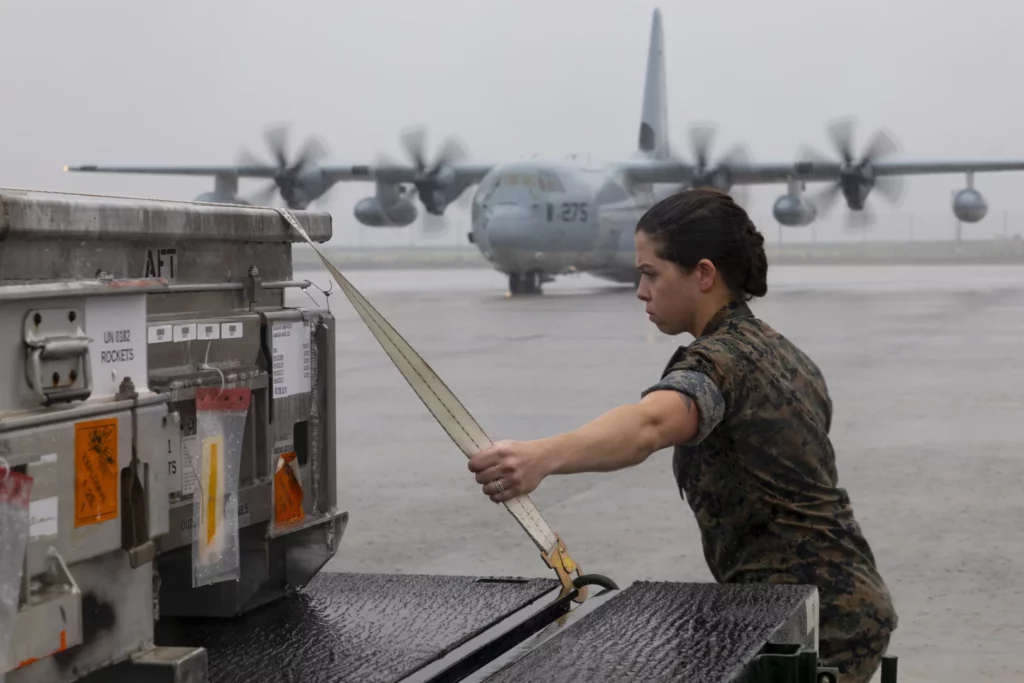Late last year, Marine Corps F-35C Joint Strike Fighters launched from Marine Corps Air Station Miramar, CA, on a journey of more than 2,500 miles across the Pacific to Hawaii. This journey, already a feat for tactical aircraft, was made more impressive in that it was the first time in some four decades that the Marine Corps had conducted such an air transit without support from Air Force tankers. The Corps’ own KC-130Js refueled the 5th-generation fighters, said Lt. Col. Courtney O’Brien, squadron commander of VMGR-352, to which the tanker aircraft belong.
In a July phone interview with Sandboxx News from Darwin, Australia, where she’s leading a globally deployed squadron of KC-130Js, O’Brien said the innovation and ingenuity invested in the trip helped to prove the Corps’ ability to operate independently and distributed across the vast reaches of the Pacific, a key requirement in executing the service’s vision for the future.
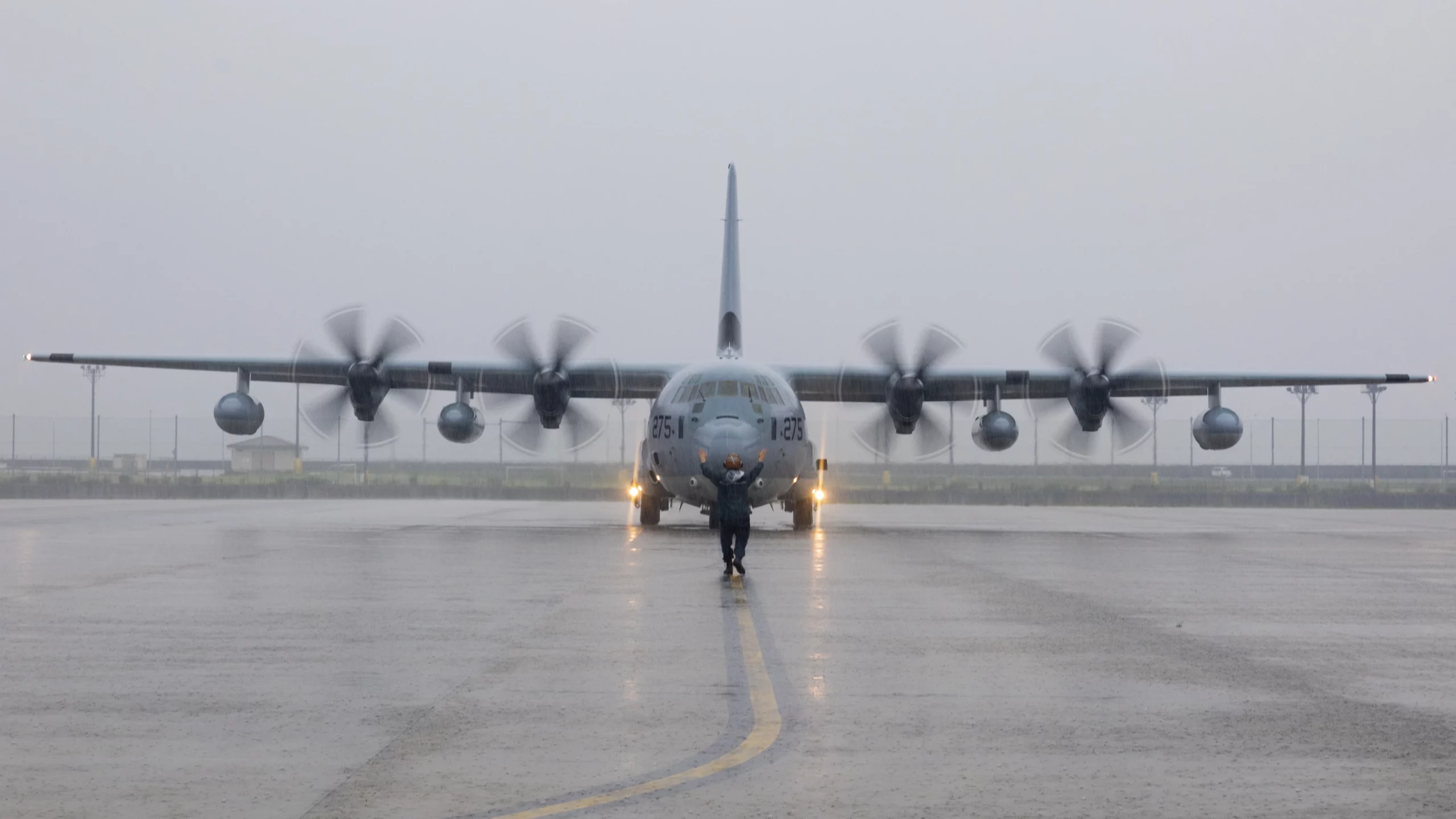
“We found increased value in my aircraft in terms of being able to do a trans-Pacific movement with the F-35C solely using Marine Corps organic assets,” O’Brien said, “Meaning that an F-35C squadron doesn’t have to wait for the Air Force to come and put them up to get them across the Pacific.”
This movement was made possible in part due to the F-35C’s substantial fuel capacity. The carrier-launched F-35C holds more fuel even than the Corps’ workhorse legacy fighter, the F/A-18 Hornet. The Marines have just two squadrons of F-35Cs, and that trans-Pacific movement marked the start of the aircraft’s first land-based deployment for the Corps.
Related: America’s massive military advantage nobody talks about: 500+ refueling aircraft
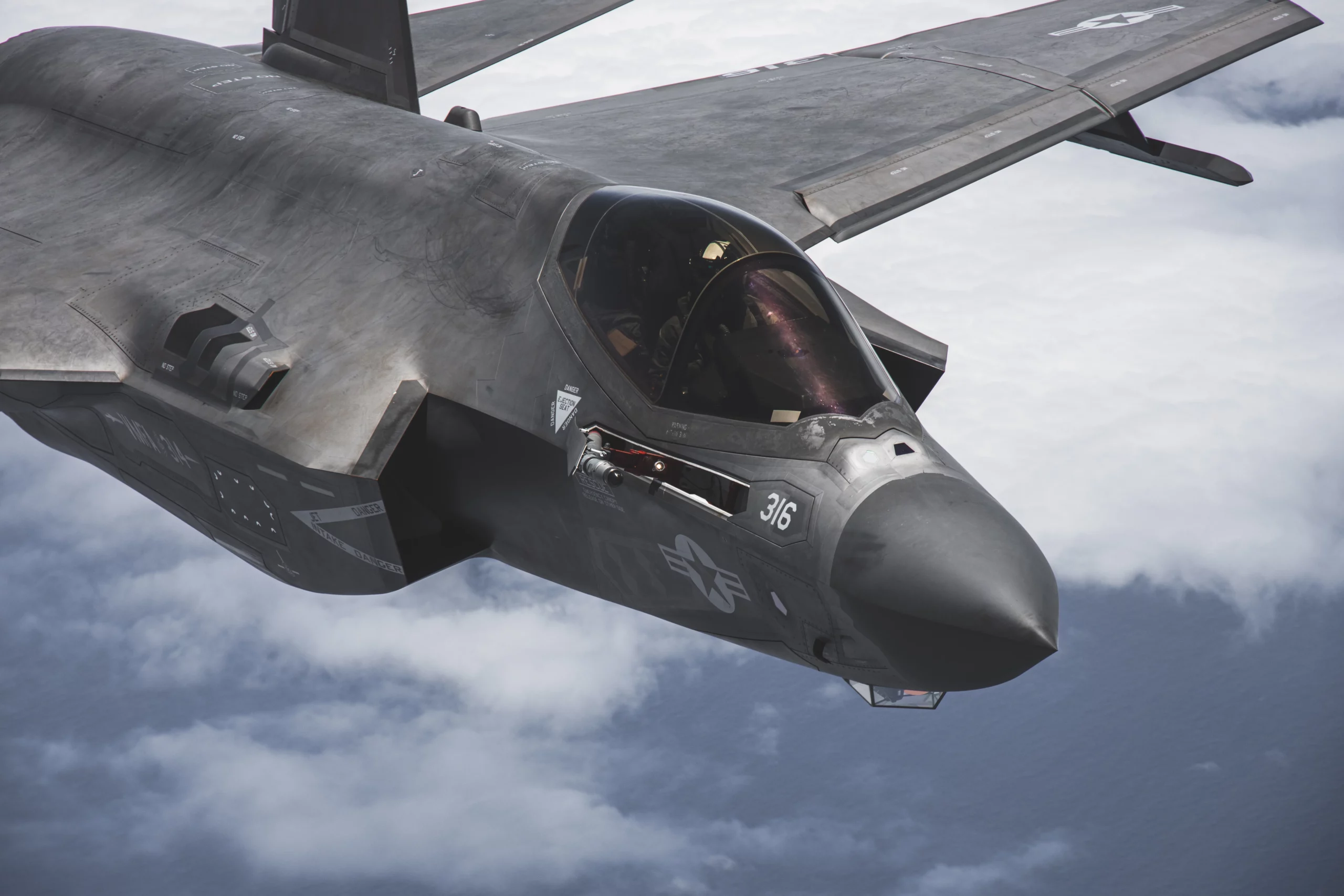
To prepare for the trip, O’Brien said, her squadron worked “tirelessly” to install extra fuselage fuel tanks in the unit’s KC-130Js, adding an additional 20,000 pounds of fuel per aircraft. The effort was more than a simple proof of concept; it validates the usefulness of the Marines’ “best deep-strike plane.”
If the climate in the Pacific ever intensifies from the tension caused by a looming China to the hot war military leaders fear, the F-35C may become the most desirable aircraft in the Marine inventory for its ability to drop a combat load deep into hostile territory and return quickly to beyond the reaches of Chinese standoff missiles. But to do that, it needs the humble KC-130, which first entered service in 1962, to enable the journey.
“After California to Hawaii, there’s multiple options for island-hopping,” O’Brien said. “And we’ve seen, our State Department has engaged with some of those South Pacific nations for access, if needed, to be able to go into those places.”
Related: These speedy new Navy medical ships are designed with the Pacific in mind
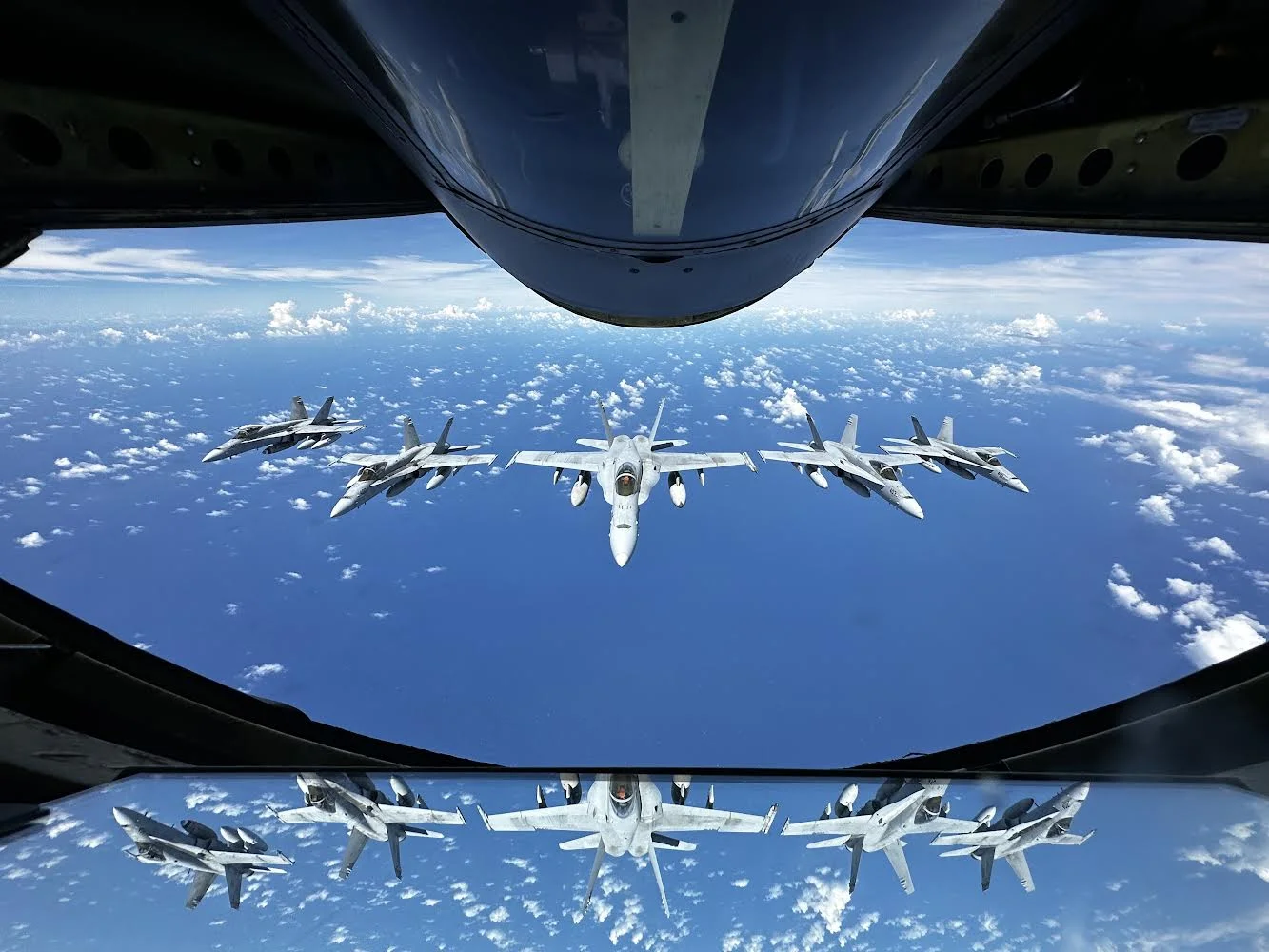
Novel efforts like these are explicitly encouraged under recently departed Marine Corps Commandant Gen. David Berger’s Force Design 2030 vision, which calls for a leaner, more agile, and more independent force capable of taking on a near-peer force in a region as diverse, littoral and logistically challenging as the Pacific.
“We’re being told as Marines to experiment and see what works and see what doesn’t, really stress test the system,” Maj. Natalie Batcheler, a spokeswoman for the Pacific-based 3rd Marine Aircraft Wing, told Sandboxx News. “That was sort of [Berger’s] anthem, and I think Lt. Col. O’Brien and VMGR-352 have done that to the extreme.”
In this case, another, more personal factor supported the collaborative thinking needed for such a mission: O’Brien is married to Lt. Col. Michael O’Brien, commanding officer of VMFA-314, the deployed F-35C squadron. The couple has two children who are staying with grandparents while their parents are deployed to the Pacific.
Related: How to keep your military family feeling close during deployment
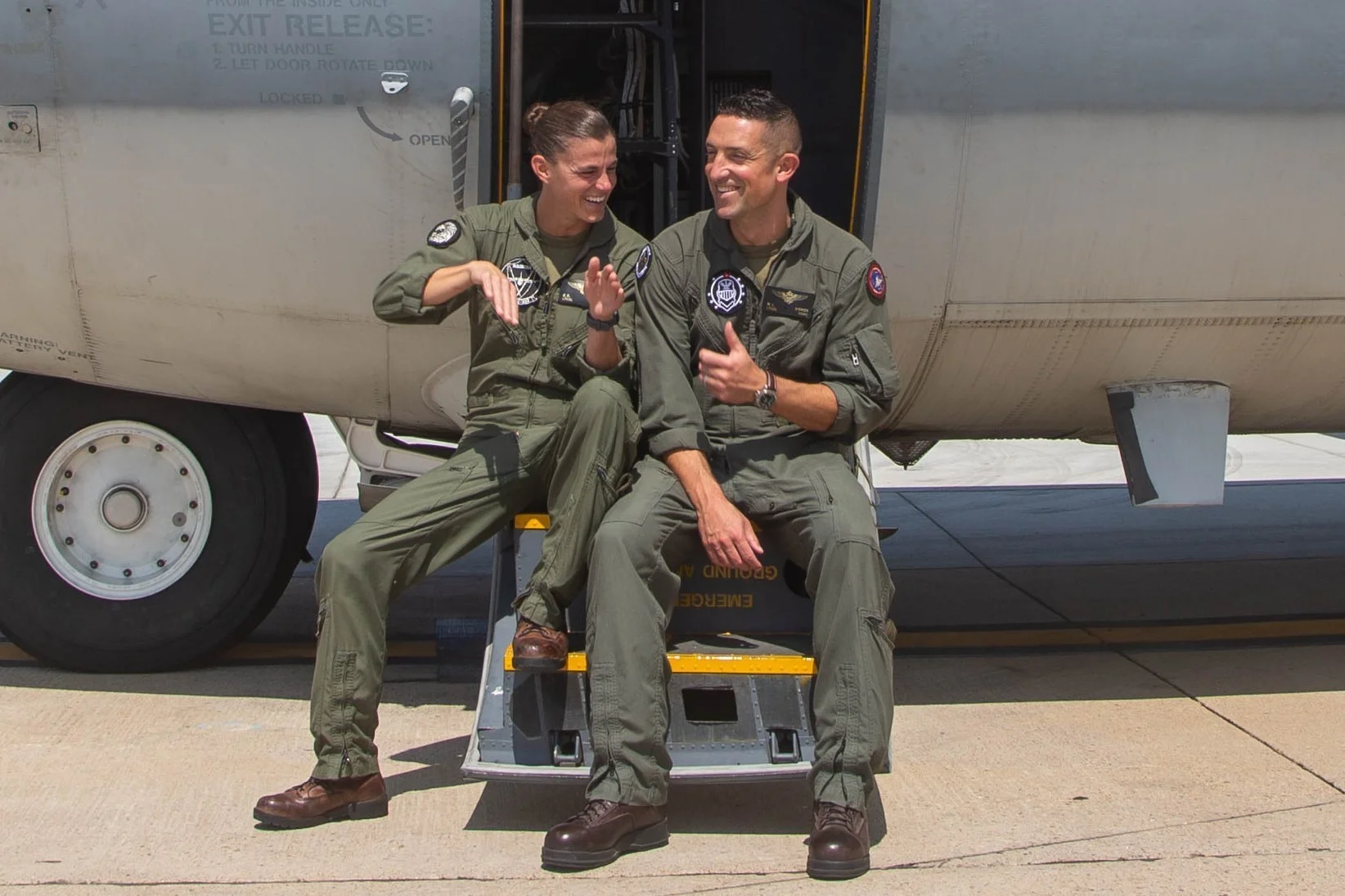
“It was pretty much talking about ideas and things like that over our dinner table,” O’Brien said. “We don’t always talk about work, but from his perspective, he had a priority to get his squadron over there to Australia and to do some training opportunities with the Australian F-35s … I know how to get the tasking, who he needs to talk to to get the tasking approved, and the most efficient way to do it.”
Beyond the trans-Pacific flight, O’Brien said operating her tankers in the Pacific has provided myriad opportunities to test out operating concepts and lay the groundwork for future operations in the region.
This fiscal year, the squadron has logged some 5,700 flight hours and operated in 20 different countries. As O’Brien spoke to Sandboxx News from Australia, she also had two aircraft conducting training in Djibouti and still more back home in Miramar. This month, aircraft from VMGR-352 linked back up with VMFA-314 to meet and refuel two F-35s completing a historic trans-Pacific journey from Miramar to Williamtown, Australia.
Earlier this month, a Marine Corps ground unit found itself in need of the equipment necessary to set up an expeditionary ground refueling capability in the Philippines, after the unit planning to transport the gear had to cancel its mission. O’Brien’s unit got the call, and a KC-130J was dispatched to San Diego to pick up the gear and fly it to Guam for pickup by another unit and transport to its destination.
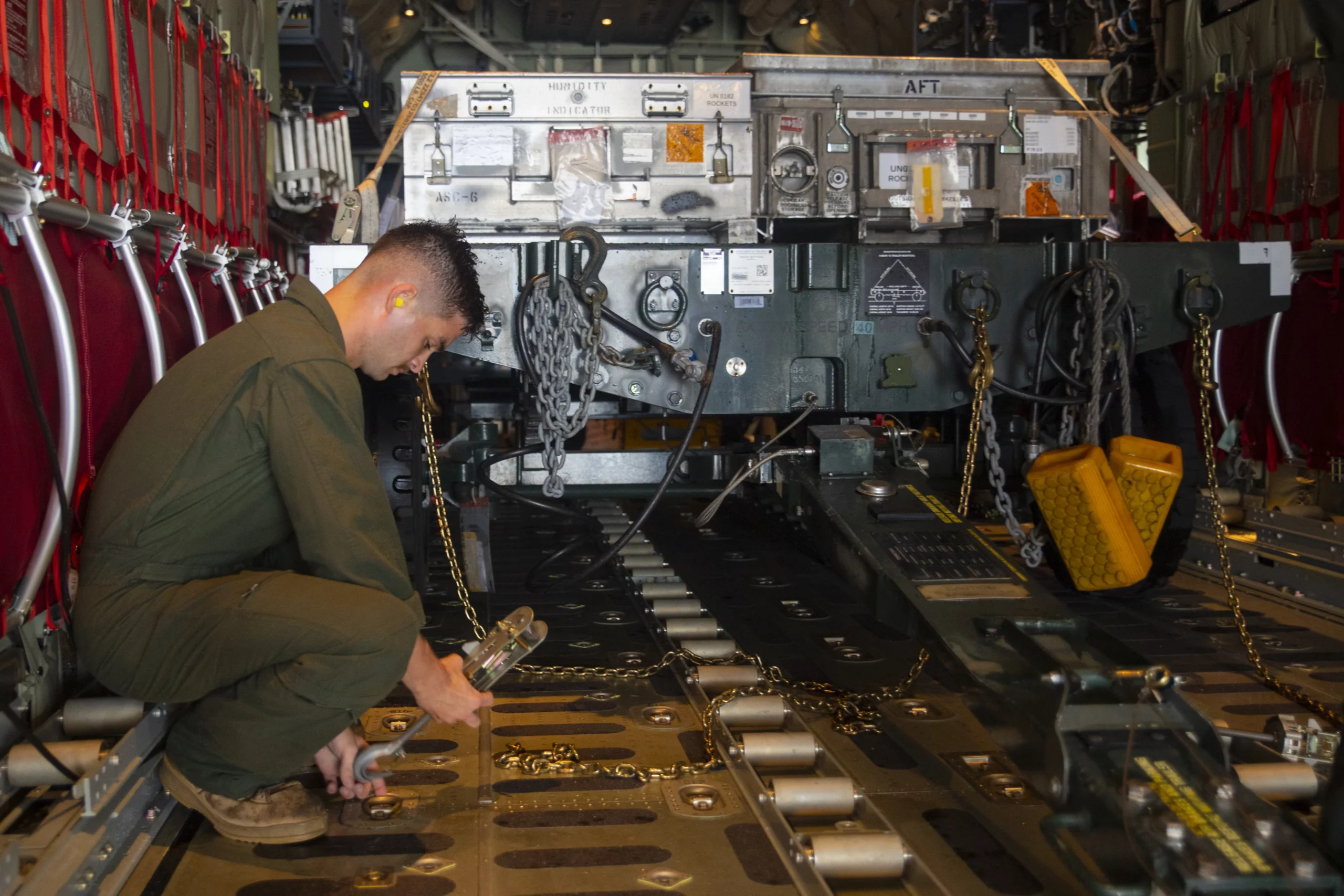
“We were able to get to the Philippines because of the established relationship we have,” O’Brien said.
Presence in the Pacific has also enabled the squadron to practice another regional skill: building friendly and accommodating relationships with many different partner nations to facilitate freedom of operation.
“My squadron and my pilots and my aircrew, we have been unwavering in the fact that we are going to be polite, gracious guests in these countries, and we’re going to follow their procedure,” O’Brien said. “We’re going to follow their procedures to a tee, and make sure that our name is held in high regard here. Whenever Australia or whenever Japan or whatever the Philippines works with the United States Marine Corps and specifically with VMGR-352, they know that we’re going to do things right every time.”
Editor’s Note: This article has been updated to remove a sentence that incorrectly stated that the F-35B holds less fuel than the AV-8B aircraft and to clarify that the F-35Cs trans-Pacific movement marked the aircraft’s first land-based deployment to the Pacific.
Read more from Sandboxx News
- This is why a SEAL Team 6 member uses the odd Taurus Judge revolver
- Game-changing military aircraft that were canceled before they could change the game
- These are the small arms the Ukraine Foreign Legion uses against Russia
- Hands-on with an S&W M1917 revolver – the weapon that armed the US in WWI
- Combat swimmer operations and their importance in a near-peer conflict
